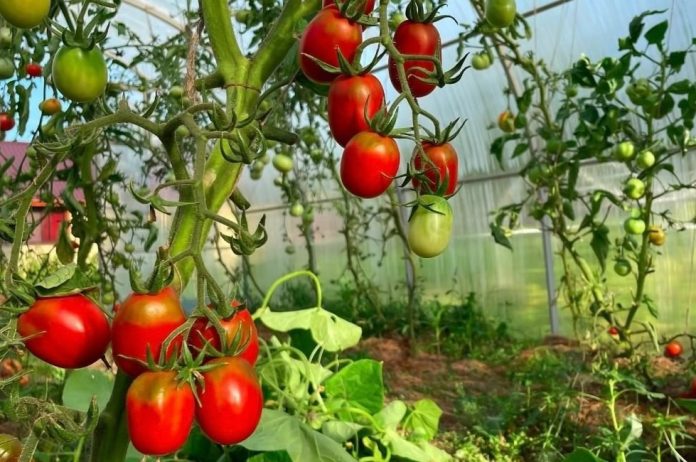Rose Kyeyune’s tomato plants were a foot tall, healthy, vigorous and ready to go into the ground.
But there was no ground left. Normally she would give them away to grateful friends, but these were greenhouse tomatoes, and at the time it was still way too cold to plant them outdoors.
Tomatoes already occupied much of her greenhouse space, and the extra bed she needed contained a crop of baby leaf cutting lettuce and a crop of radishes.
Rather than throw away the plants, she dug holes down the center of the bed and installed the tomatoes. They towered above the carpet of lettuce and radishes like trees above the forest floor.
Tomatoes are starving, thirsty plants that don’t like competition, but in this case they were too young to mind the radishes’ and lettuce’s small root systems. Furthermore, those crops were soon to be harvested, leaving the tomatoes free to ‘do their thing’.
Rose could also have sown those small, early crops in rows on either side of the tomatoes after they were planted. In fact the previously planted tomatoes had rows of head lettuces on either side, to be picked as soon as they were mature.
This cheek-by-jowl planting is called intercropping or inter-planting, and it’s a great trick to use when you’re short of space. The strategy in this case took advantage of the difference in maturity dates of the crops involved.
In another instance, it might rest on differences in plant structure. Rows of shallow-rooted onions might happily alternate with rows of tap rooted carrots, because they feed at different levels of the soil.
Rose explains that intercropping is like doubling your garden’s size. Next time you transplant brassicas such as Brussels sprouts, cabbages or kale into a bed, note how much extra room there is while the plants are small.
Any quick, leafy salad crop could occupy that empty area until the brassicas reach full size. A tall crop of corn or trellised beans could share ground with early leaf crops, which might even appreciate the shade they cast as days grow hotter.
Natives worked out intercropping long ago with the common “Three Sisters” system. A sturdy corn variety went in first, followed in a week or two by a circle of beans — a branching, shade-tolerant variety that used the cornstalks as beanpoles but did not drag them down.
A blanket of vining squash was allowed to cover the ground beneath, their big leaves suppressing weeds and helping the soil to stay moist.
The beans, thanks to the nodules on their roots that extract nitrogen from the air, contributed extra fertility for the other two crops, thus minimizing competition.
Together the sacred threesome yielded a diet rich in protein, carbohydrate, vitamins and oil.
Such skilled agronomy inspires great respect from this farmer, whose goal was merely to find a home for leftover plants and have more tomatoes for canning.










